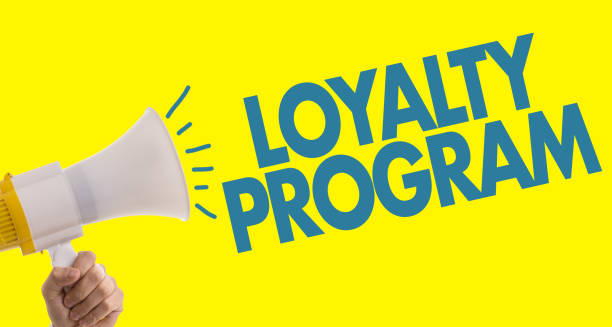
In today’s fiercely competitive market, businesses constantly seek innovative ways to enhance customer loyalty and drive engagement. One strategy that has proven highly effective is the coalition loyalty program. Unlike traditional loyalty programs that operate within a single brand, a coalition loyalty program allows multiple businesses to collaborate under a unified rewards system, offering customers greater value and more reasons to stay engaged.
By leveraging a shared platform, coalition loyalty programs enable brands to offer diverse benefits while pooling resources and customer insights. This model not only increases customer satisfaction but also builds strong business partnerships and expands consumer reach.
What Is a Coalition Loyalty Program?
A coalition loyalty program is a joint customer rewards initiative where multiple, non-competing businesses come together to create a shared loyalty ecosystem. Customers can earn and redeem loyalty points across a variety of participating brands within the network. This setup enhances the value of the program for customers and makes it more attractive compared to standalone offerings.
For example, a coalition program might include a retail store, a fuel station, an airline, and a restaurant chain—allowing customers to earn points while shopping, traveling, or dining, and redeem them across any of the participating businesses.
Key Components of a Successful Coalition Loyalty Program
Implementing a coalition loyalty program involves more than just forming partnerships. It requires a well-structured framework to ensure seamless integration and maximum customer engagement. Key components include:
- Unified Technology Platform: All participating brands must use a centralized system to manage customer data, track points, and process redemptions.
- Flexible Reward Options: Customers should have multiple ways to earn and redeem points across various brands.
- Customer Insights and Analytics: Access to shared data allows each brand to understand customer behavior and tailor their marketing efforts.
- Strong Brand Alignment: Partner brands should have complementary offerings and values to ensure consistent customer experiences.
This structure enhances efficiency, builds trust among partners, and delivers a superior experience to customers.
Benefits of a Coalition Loyalty Program
A well-managed coalition loyalty program offers several benefits for both businesses and customers:
1. Increased Customer Engagement
With more opportunities to earn and use rewards, customers are more likely to remain active within the program.
2. Expanded Customer Base
Each participating business gets access to the customer base of its coalition partners, opening new growth channels without heavy acquisition costs.
3. Higher Customer Retention
When customers can use their loyalty points across multiple brands, their overall satisfaction and loyalty increase significantly.
4. Cost Efficiency
Sharing resources like technology, marketing, and rewards reduces the cost burden on individual brands.
5. Enhanced Customer Experience
The variety and convenience of reward options elevate the overall experience, making customers feel more valued and appreciated.
Many brands see coalition loyalty as a natural evolution of their loyalty strategy, especially as consumers demand more flexibility and personalization.
Examples of Popular Coalition Loyalty Programs
Some of the most successful coalition loyalty programs have become household names:
- Payback (India and Germany): One of the world’s largest coalition programs, Payback allows customers to earn points across a wide array of retailers and service providers, including supermarkets, fuel stations, eCommerce platforms, and banks.
- Air Miles (Canada and Middle East): Customers earn miles through everyday purchases and redeem them for travel, merchandise, or entertainment across partner brands.
- Nectar (UK): With partners in retail, travel, and banking, Nectar has built a vast coalition network offering customers unmatched rewards flexibility.
These programs demonstrate how brands can work together to create a richer, more rewarding experience for their customers.
Steps to Launching a Coalition Loyalty Program
Starting a coalition loyalty program requires a structured approach to ensure success:
- Identify Potential Partners: Choose non-competing businesses that share a target audience and have a strong customer base.
- Set Common Objectives: Align on key goals such as increasing customer lifetime value, boosting sales, or enhancing brand loyalty.
- Choose the Right Technology Platform: Implement a loyalty system that supports multi-brand point tracking, integration, and reporting.
- Develop a Unified Rewards Structure: Ensure customers receive consistent value regardless of which brand they interact with.
- Implement a Governance Model: Establish rules around data sharing, reward distribution, and marketing collaboration.
- Promote the Program Collectively: Leverage each partner’s marketing channels to build awareness and excitement.
This process ensures that all partners benefit equally while customers enjoy a seamless experience.
Effective Loyalty Programs Start with Customer Value
For any loyalty initiative to work, including a coalition loyalty program, it must deliver clear and consistent value to the customer. When customers feel they are genuinely benefiting from their participation, they’re more likely to engage regularly, refer others, and stay loyal over the long term.
Effective Loyalty Programs are built on customer-centric principles—understanding what motivates customers, rewarding those behaviors, and evolving the program based on data and feedback.
Coalition programs take this a step further by offering value across a wide range of everyday activities, which strengthens the overall connection between the customer and participating brands.
Challenges to Consider
While coalition loyalty programs offer many advantages, there are challenges that must be addressed:
- Complex Coordination: Aligning multiple brands with different systems, goals, and processes can be complicated.
- Data Privacy Concerns: Managing shared customer data responsibly and complying with privacy regulations is critical.
- Reward Fairness: Ensuring each brand feels they receive equitable value from the program requires transparent rules and tracking.
Overcoming these challenges requires strong governance, the right technology, and open communication among all partners.
Conclusion
The coalition loyalty program model is reshaping how businesses approach customer retention and engagement. By partnering with complementary brands, businesses can offer a more dynamic and valuable loyalty experience while benefiting from shared resources and broader customer reach.
Whether you’re a retailer, service provider, or digital platform, exploring a coalition loyalty strategy can open new avenues for growth and strengthen your connection with customers. In an age where consumers value choice, convenience, and personalization, coalition loyalty programs are a powerful way to meet those expectations and drive sustainable business success.


